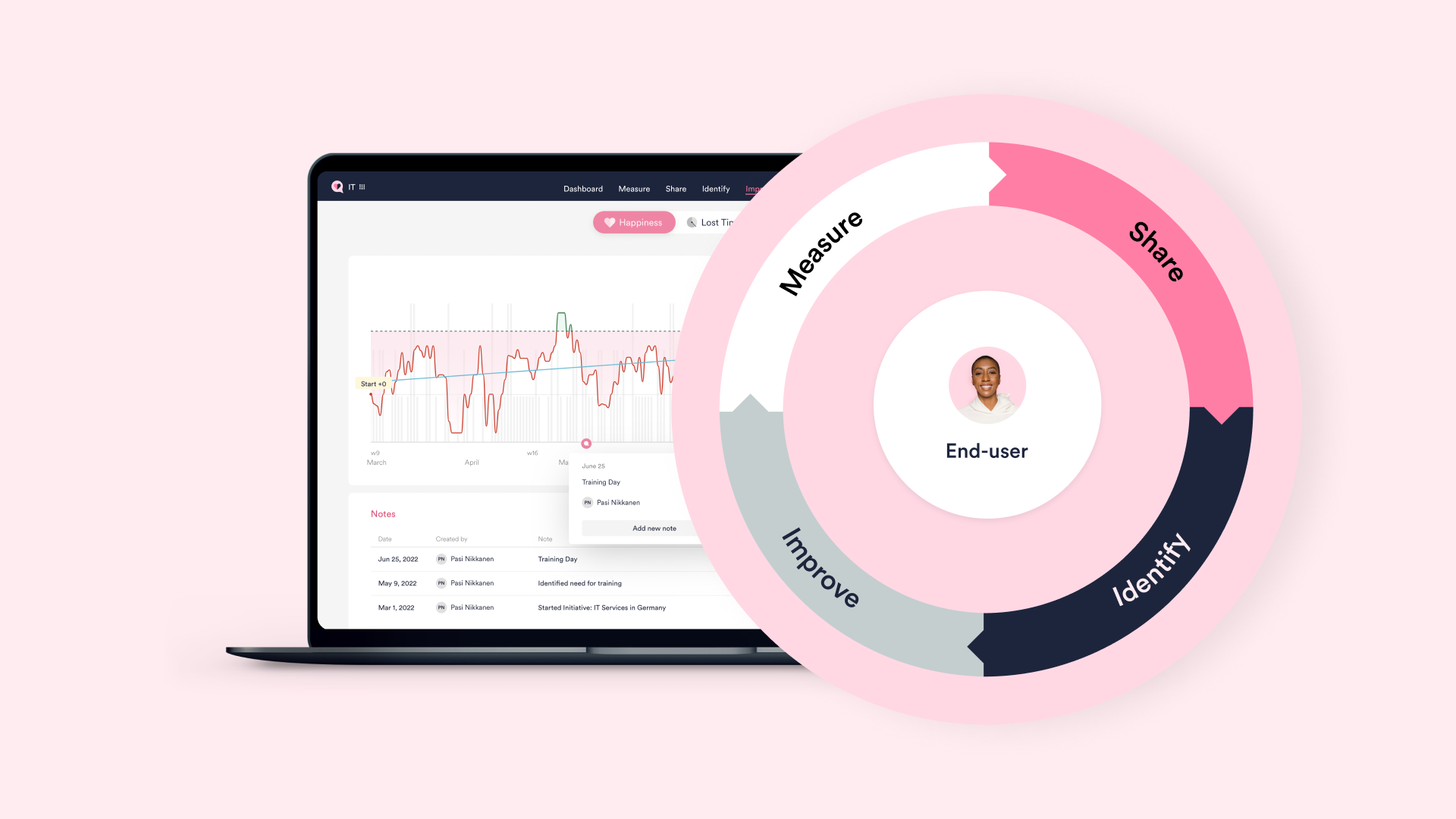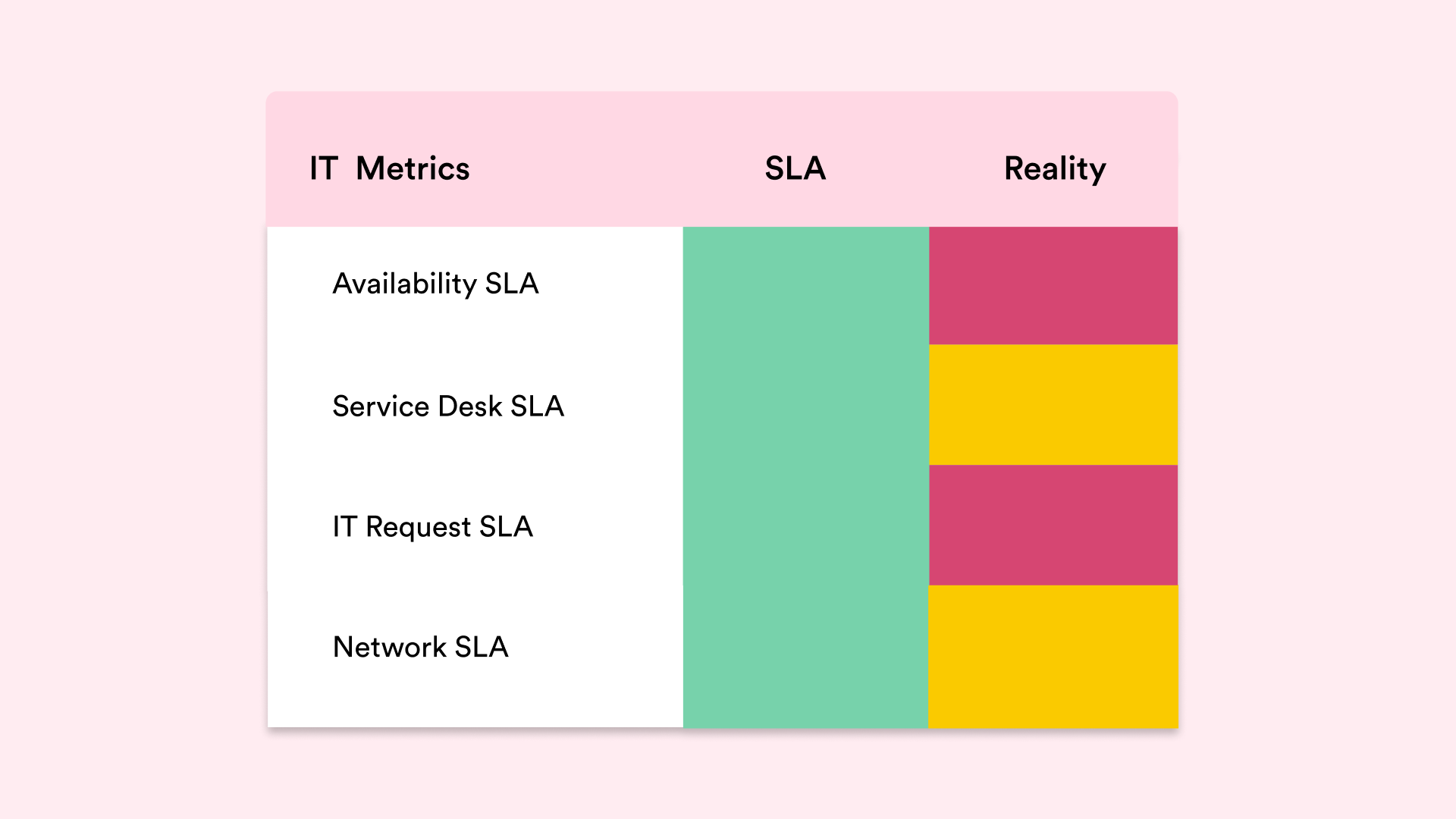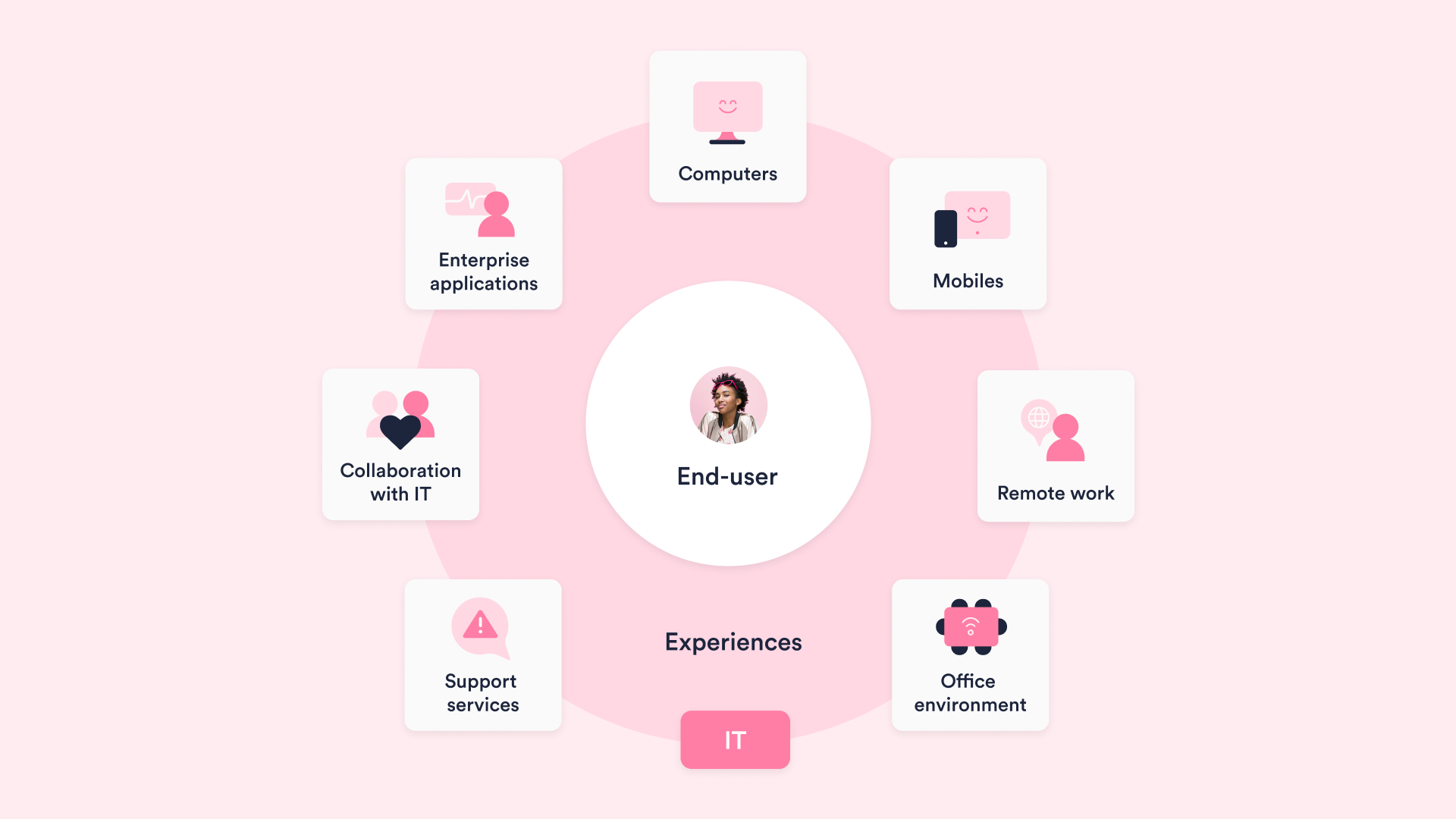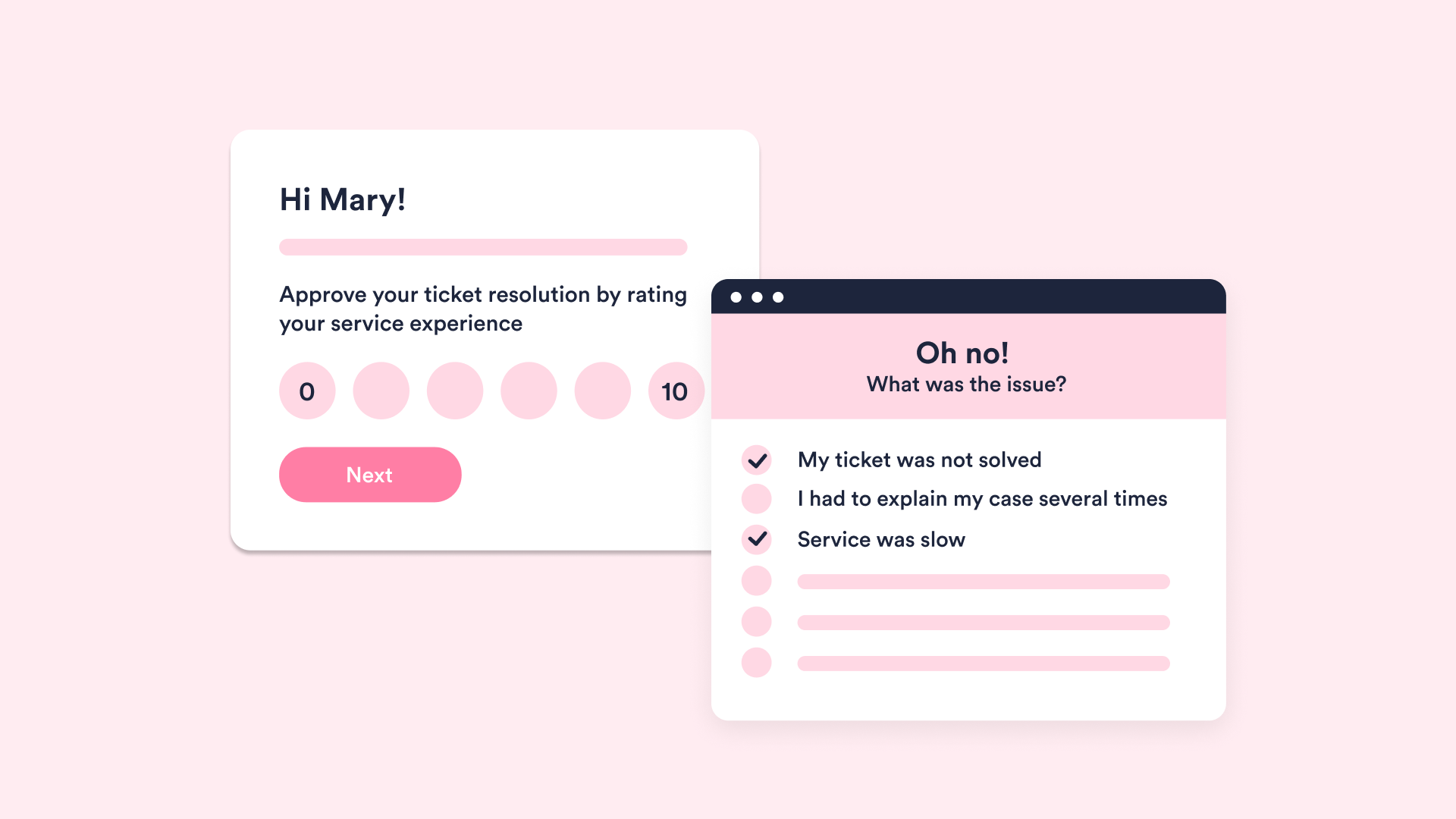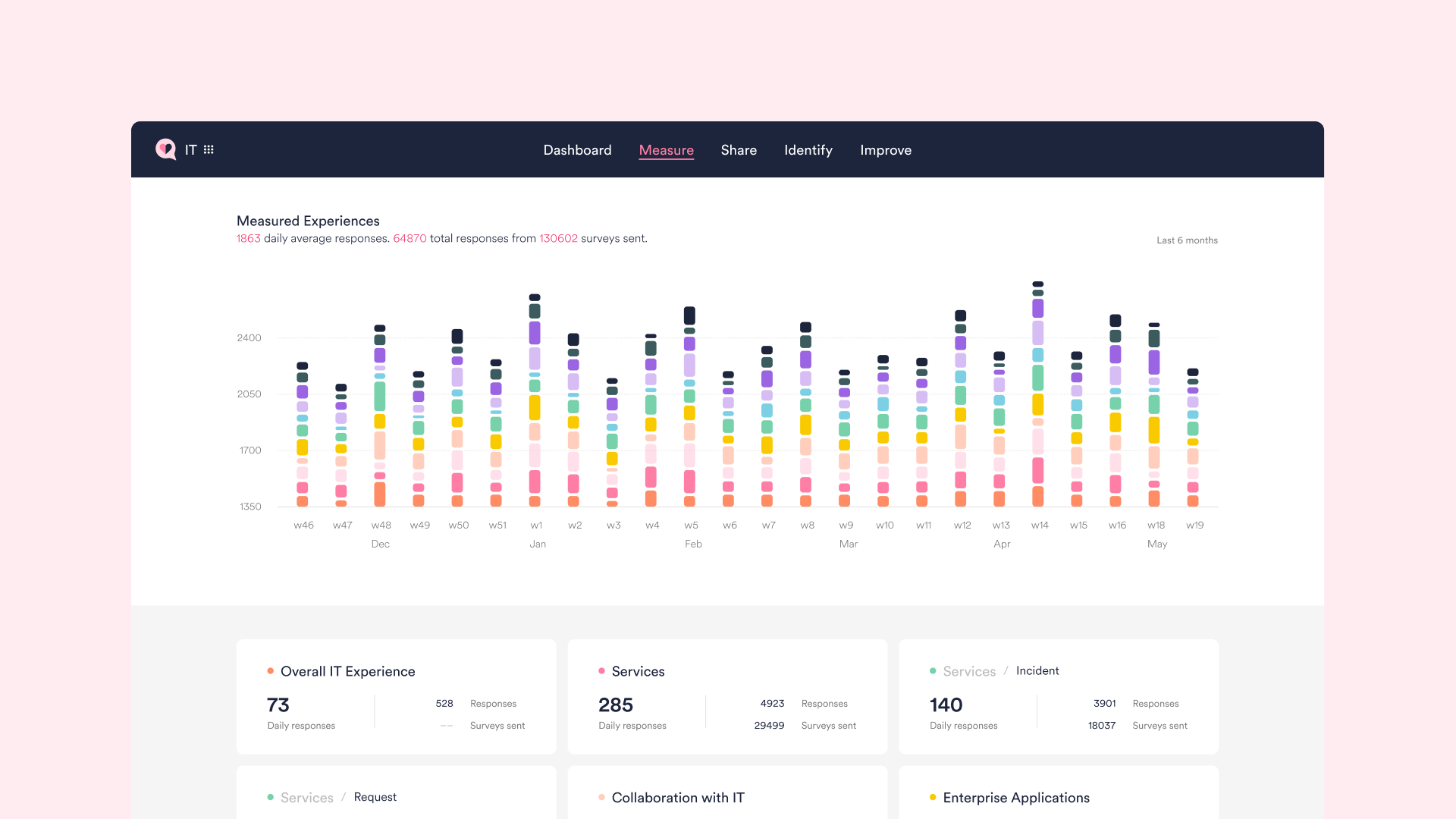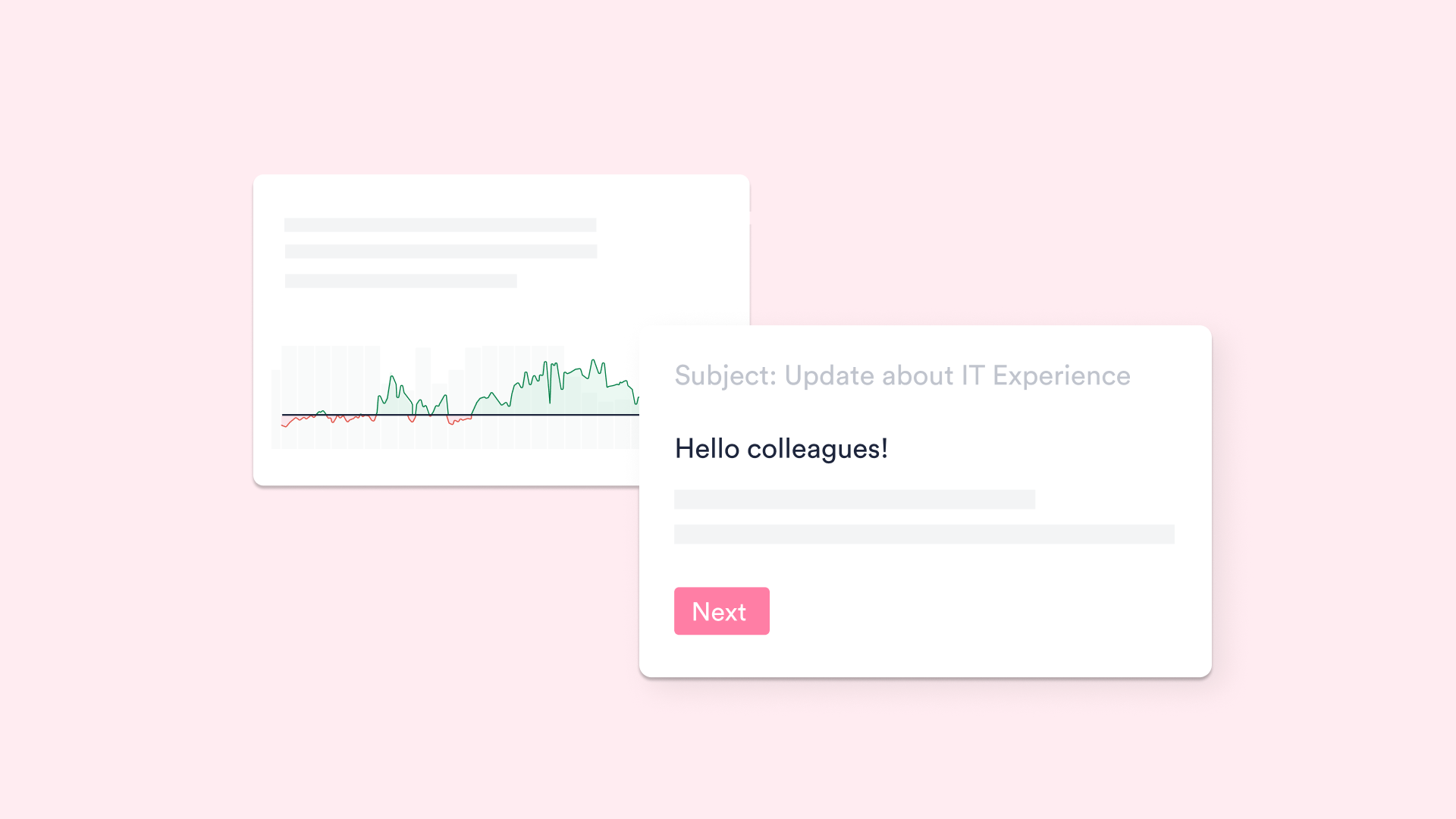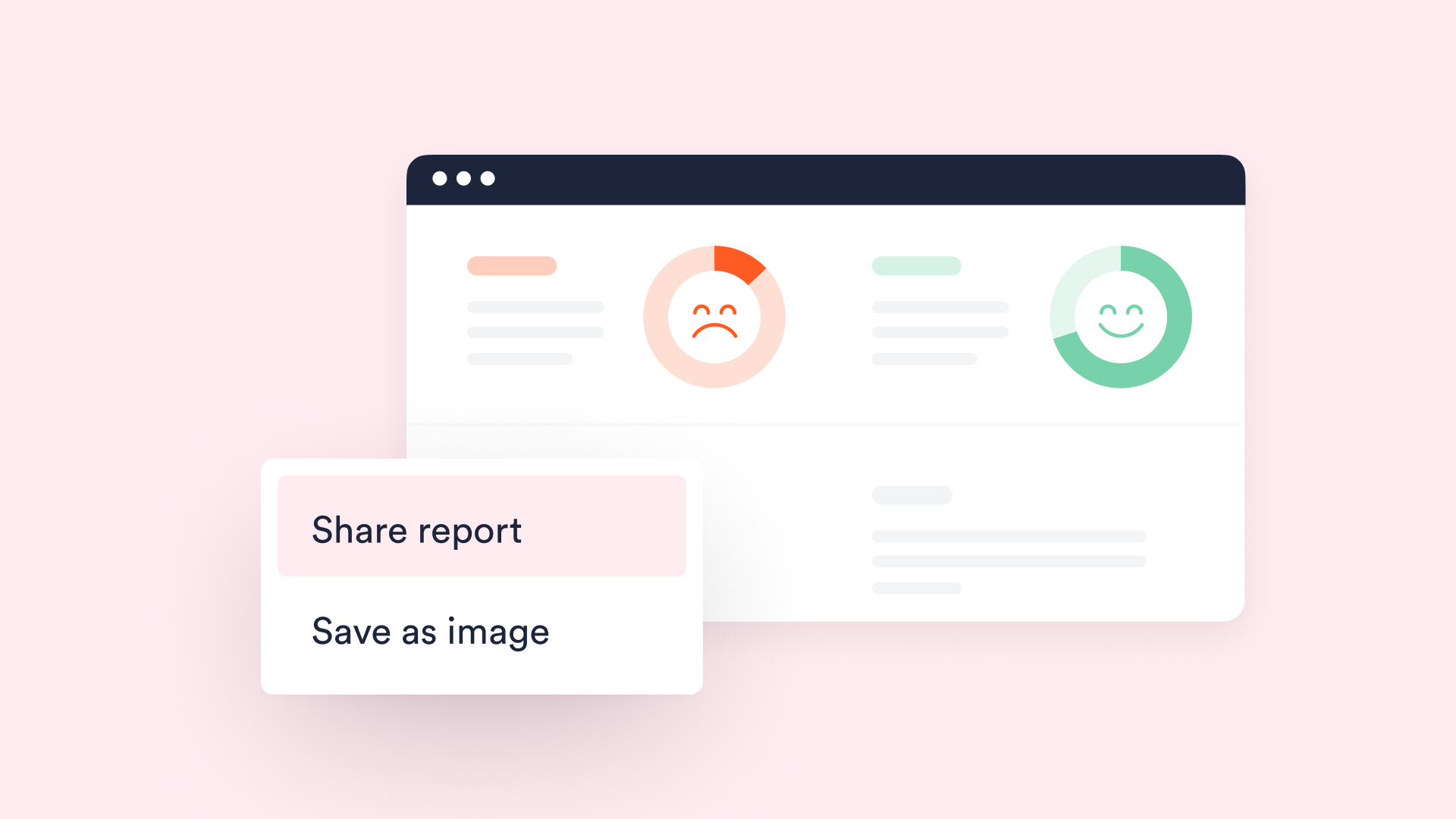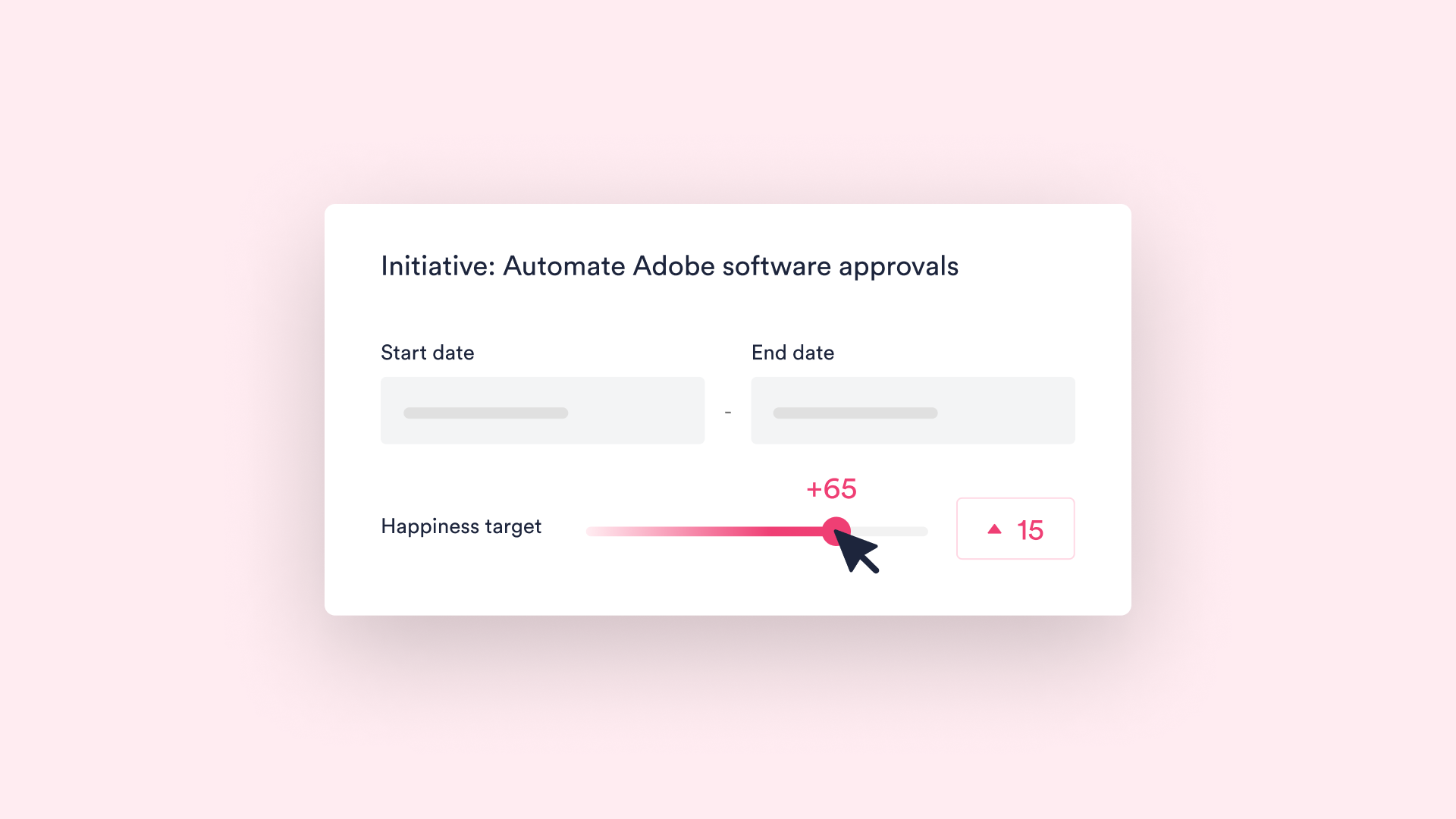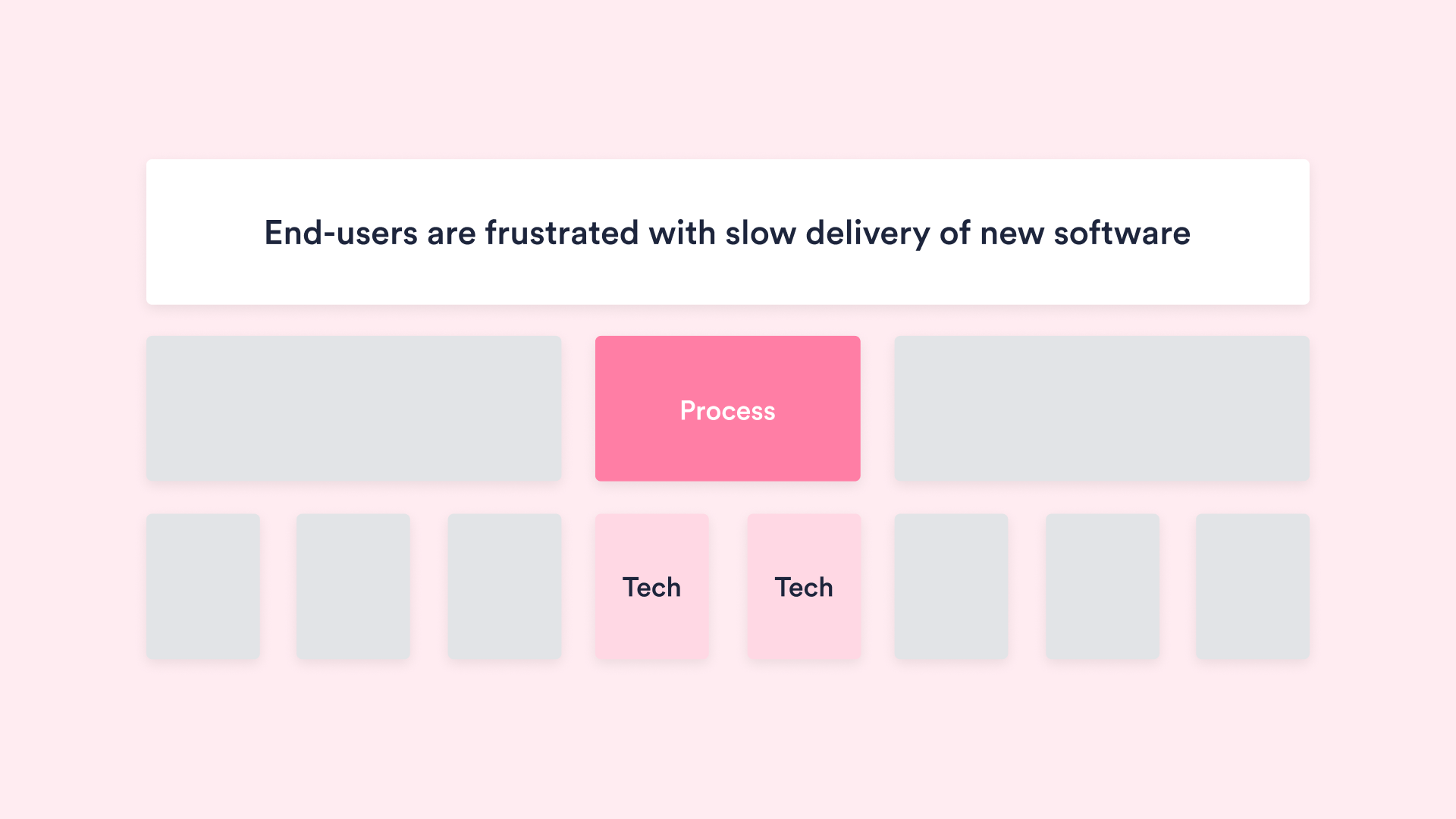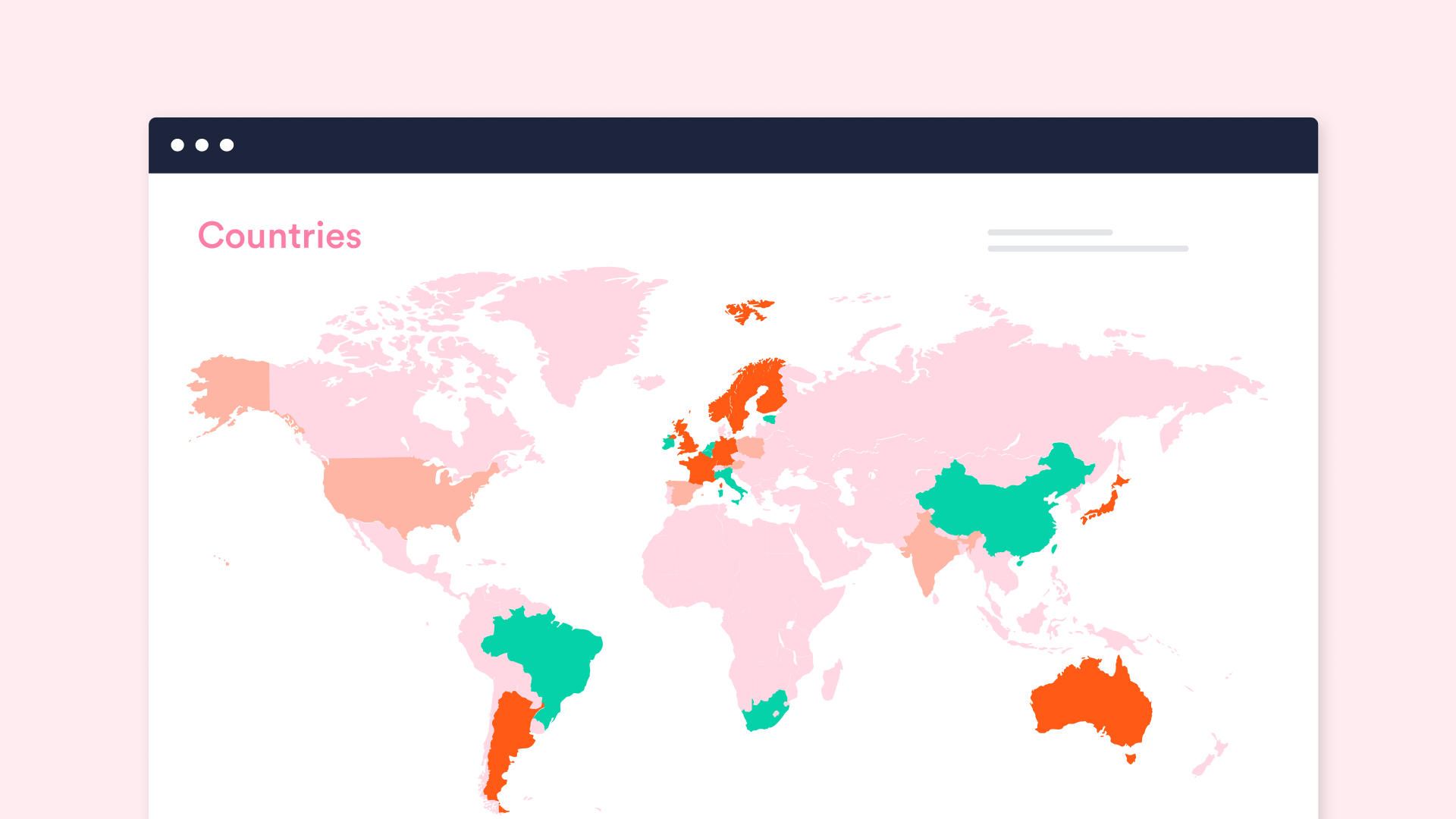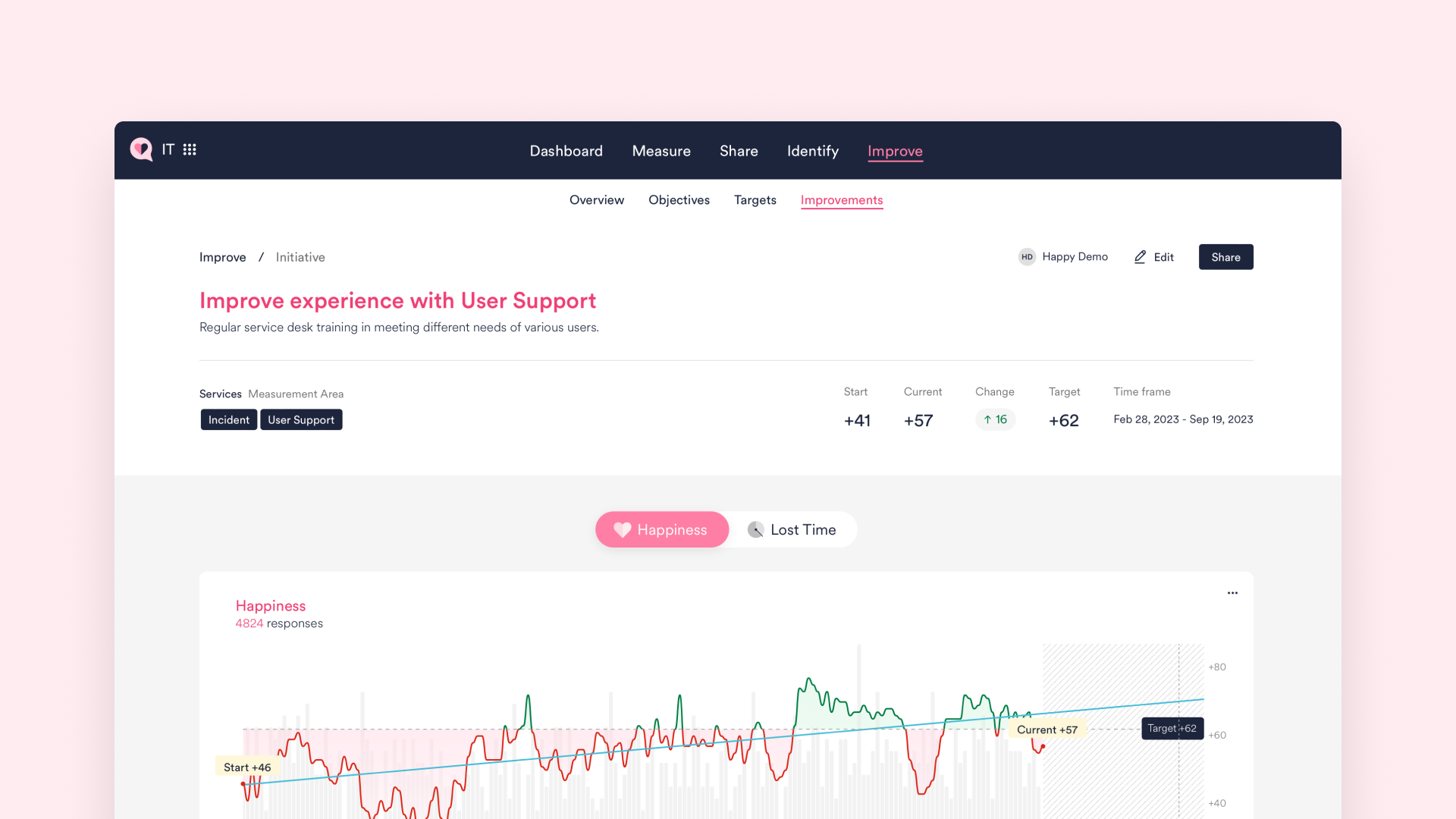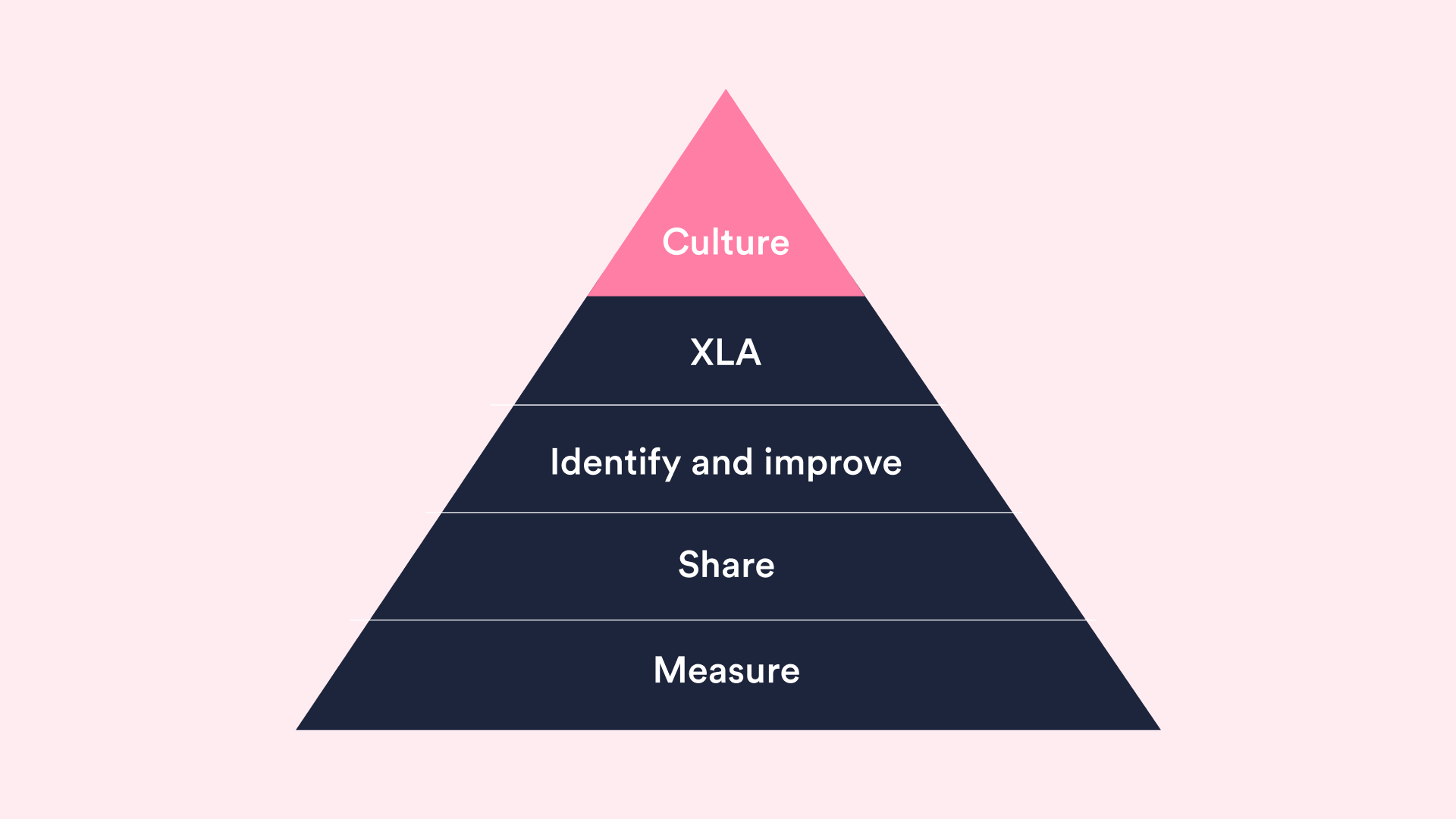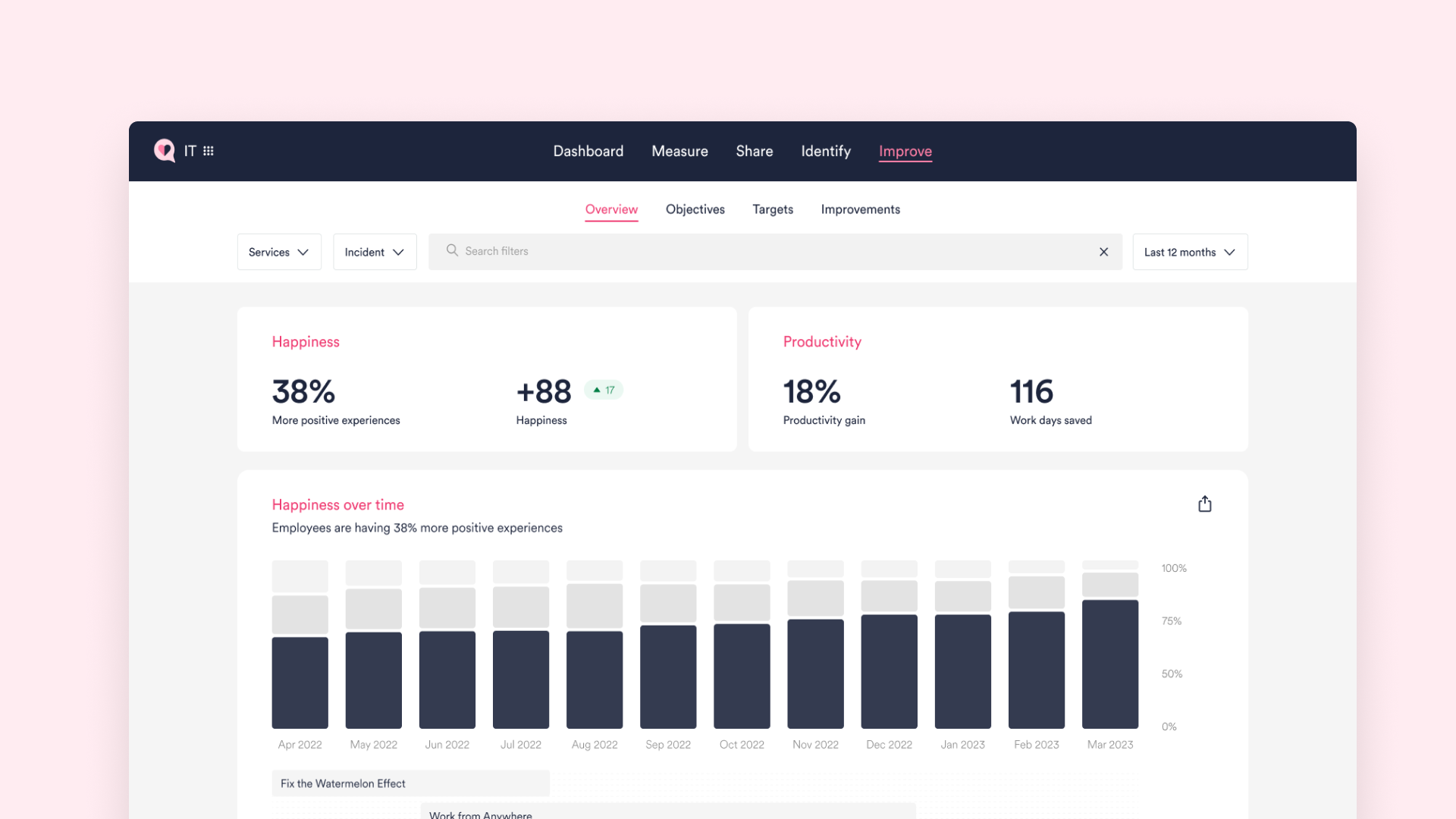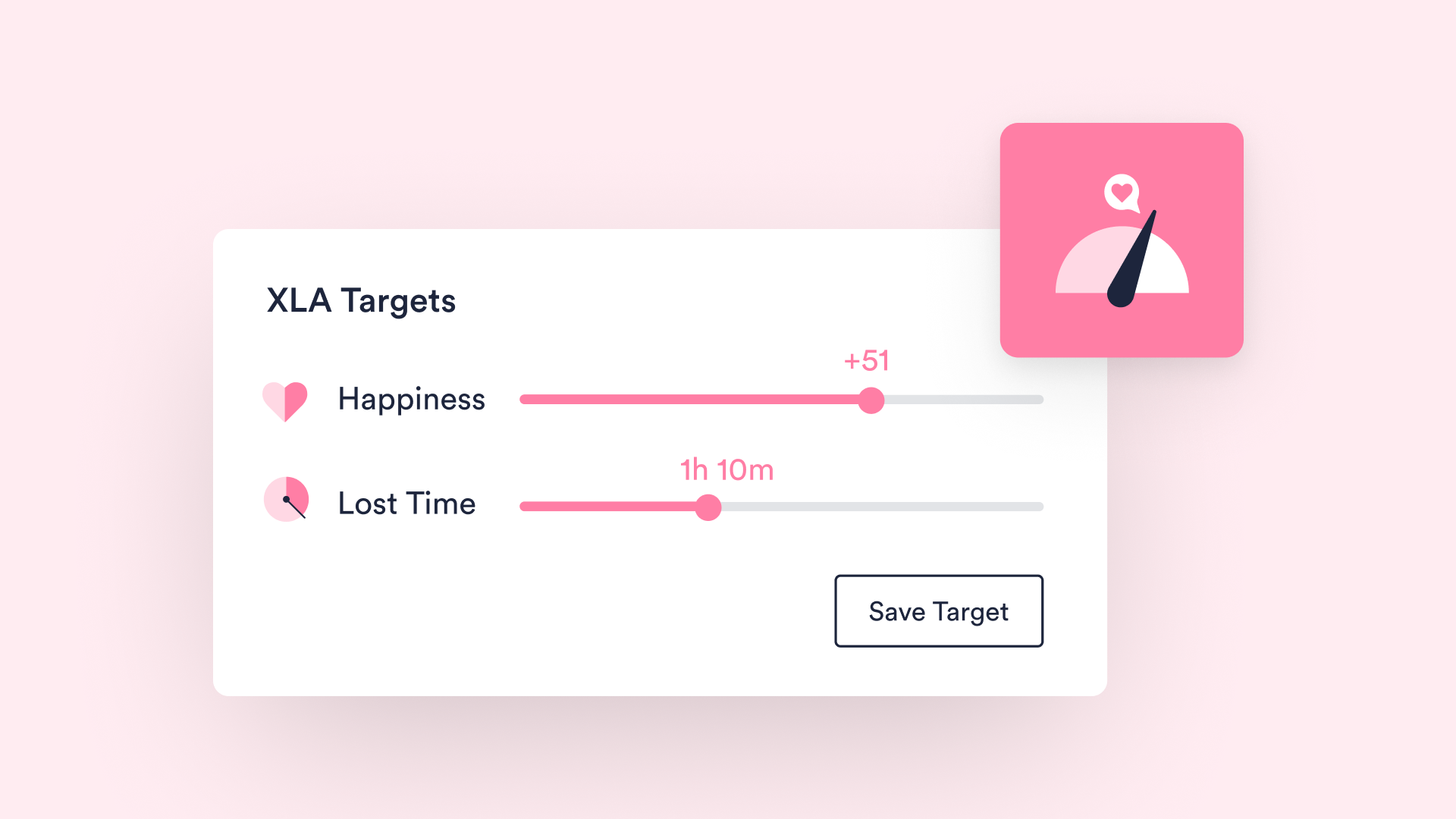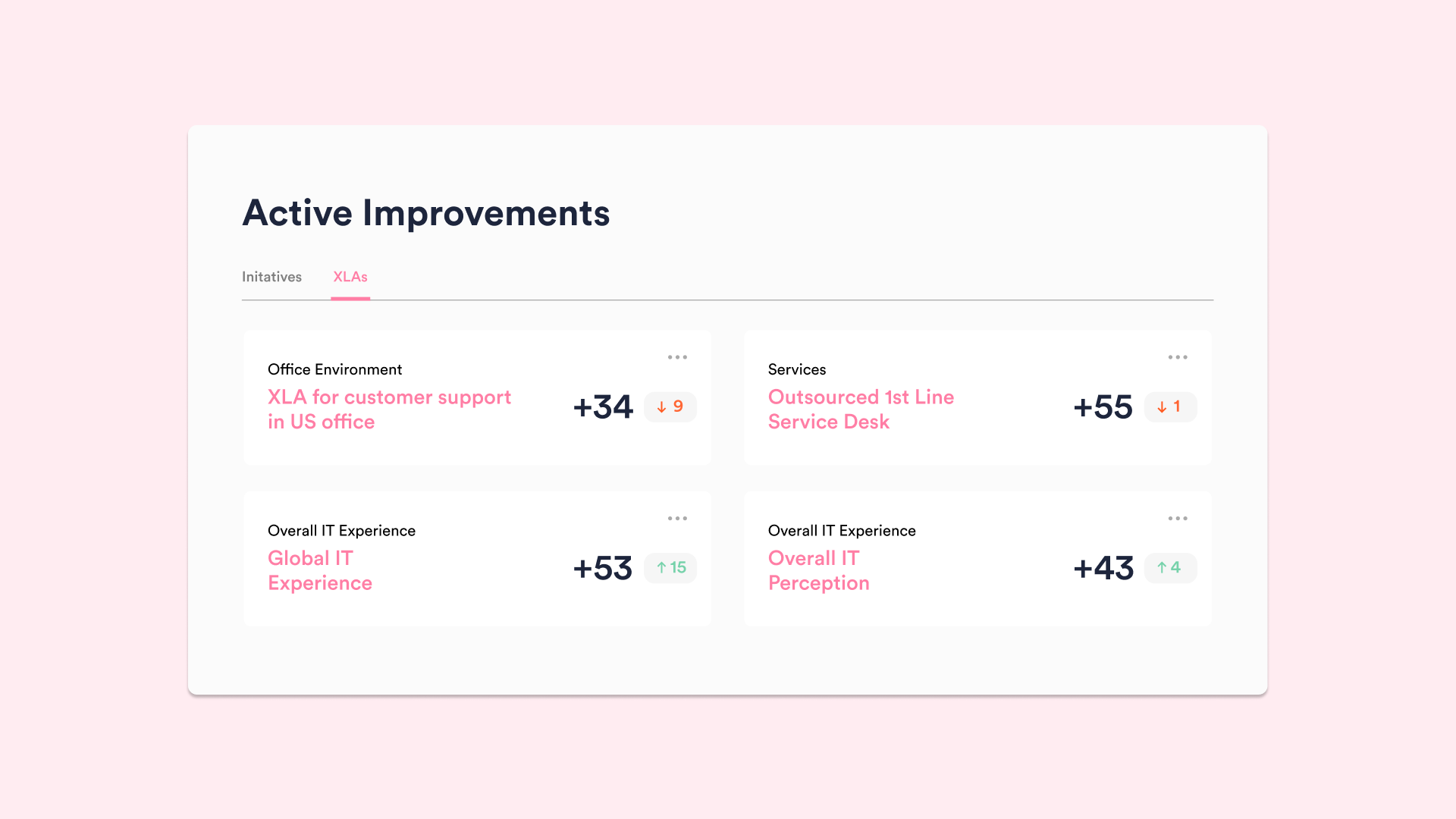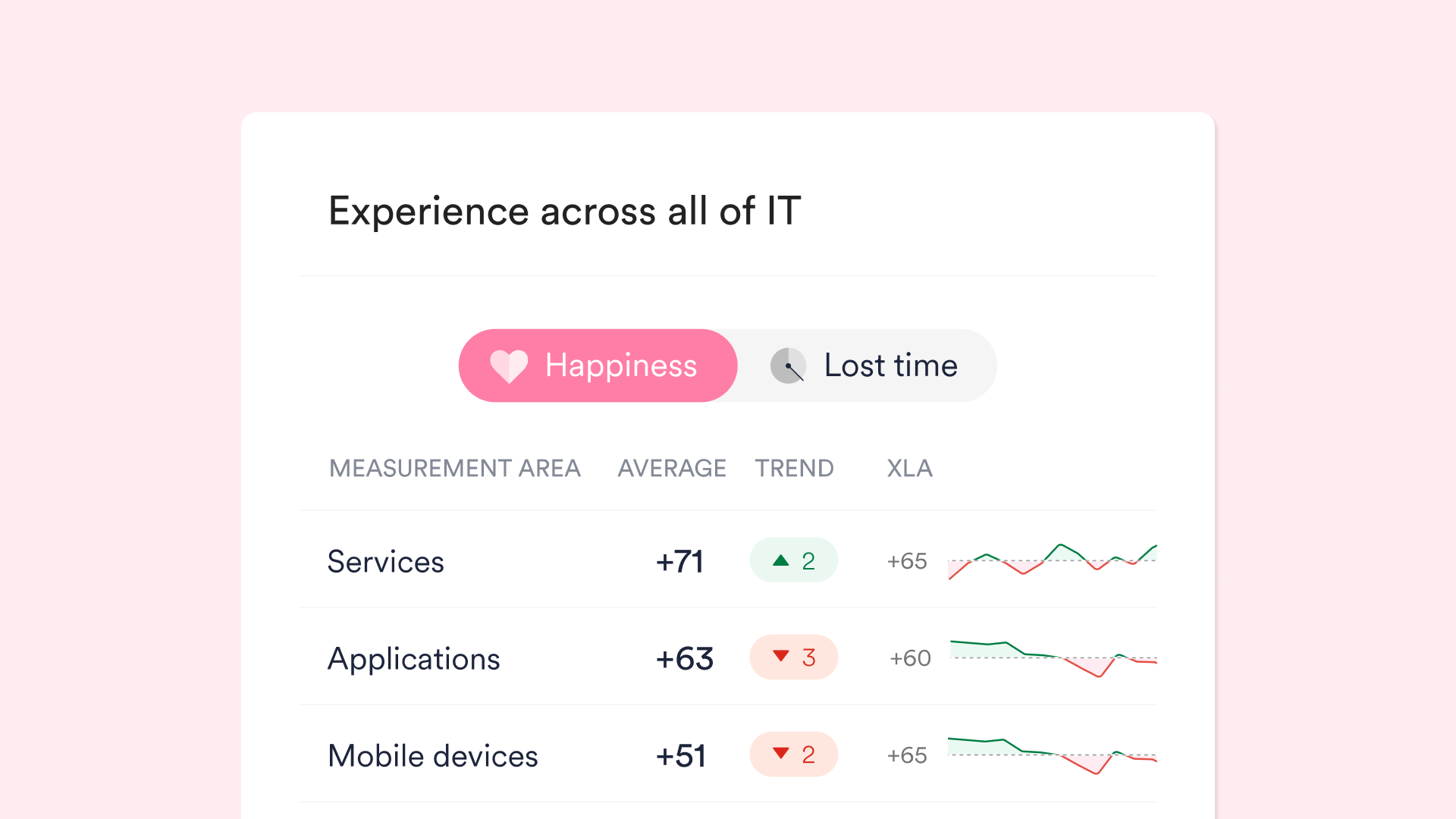ITXM Foundation
Course &
Certification
Discover our FREE course about human-centric IT experience management.
Who is this course for?
This course is specifically created for enterprise IT service management (ITSM) professionals seeking to grasp the core principles of IT experience management (ITXM).
It equips you with the knowledge of the ITXM principles that you can apply to your own work. The course covers the ITXM model for continual improvement and presents practical examples where HappySignals' customers have seen the value of IT experience management.
By obtaining the ITXM certificate, you join a community of thousands of professionals who share a human-centered perspective on the future of IT service management.
What to expect
- Seven lessons going through the foundational principles and concepts in IT experience Management
- Short, concise lessons lasting a total of 35 minutes. More smiles, less time wasted.
- Content based on real enterprise IT challenges and learnings since 2014, when HappySignals was founded.
- Certification exam with 14 multiple choice questions to earn your ITXM Foundation certificate
- Access to ITXM peer group for learning and sharing
Lesson 1: Introduction
In this introductory lesson, you'll learn how ITXM enables evaluating IT services from the perspective of end-users. This will help you avoid having “Watermelons” in your IT reporting that look green on the outside but are red inside.
You'll discover why it's important to strive for an IT culture that prioritizes end-user experience to improve IT services based on ITXM principles.
This approach enables organizations to better address the needs and preferences of end-users, focusing on the things that really matter for experience.
Duration: 3:34 min
The origin of ITXM
Experience Management is not a new concept, but ITXM brings those principles into IT operations. This allows IT teams to focus on the end-user outcomes as a shared objective.
The Watermelon Effect
While IT SLAs and KPIs may appear green on the surface, beneath the surface, end-users might express dissatisfaction with IT services. ITXM aims to fix this discrepancy.
Humans as sensors
IT experience focuses on end-users' perceptions of IT services. Humans are the best sensors, as experience data enables IT to know if their work is valued across all IT touch points.
Lesson 2: Measuring IT Experiences
In this lesson, you'll learn about the principles of measuring experiences in the context of ITXM.
These include continuous feedback from end-users, establishing contextual connections between operational and experience data, and focusing on actionable experience data that adds value.
Discover how you can gain valuable insights and enhance your ITXM journey through effective experience measurement.
Duration: 6:17 min
Measure early
The advantage of measuring early is that you can get a baseline before changes, to understand whether the actions you take later are having the positive impact you hoped for.
Measure continuously
Measuring experience once a year is like checking the weather outside today, and expecting it to be the same the whole year.Link to operational data
Connecting experience data to operational data enables understanding the context by integrating information from ITSM tools with user experience data.Lesson 3: Sharing Experience Data
In this lesson, you'll discover the significance of sharing experience data in ITXM.
Explore the purpose of sharing and its role in driving IT improvement within the organization.
Learn how sharing ITXM data enhances engagement, encourages involvement, and fosters a proactive approach to leveraging data for improvements.
Duration: 4:00 min
Transparency leads to trust
Openly sharing experience data cultivates trust, which leads to shared focus. With trust established, you enable collaborative decision-making and positive outcomes.
Share the good and the bad
Don't only communicate improvement areas; highlight successes, too. This aids IT in pinpointing experience gaps and areas where success can be celebrated"You said, we did"
This type of communication refers to a process where IT communicates with end-users about how their feedback has influenced IT decisions and improvements.Lesson 4: Identifying improvement areas
In this lesson, you'll learn how to find and fix problems in IT using experience data. We'll also talk about making smart decisions with ITXM data to avoid making mistakes when identifying improvement possibilities in IT services.
You'll understand that experiences can be different in many ways, and we'll show you how to make IT more focused on people. You'll learn about comparing your data to benchmarks and using that data to make better choices that lead to better IT experience.
Duration: 7:11 min
Experience vs sentiment
Experience is the outcome, the journey from start to finish. End-user sentiment can change many times during that journey.
People, process, technology
Understanding how end-users feel about IT, helps identify what really matters to end-users, but also which processes and technologies are involved.
Global benchmarks
See how IT in your organization compares to other HappySignals users globally. Account for cultural differences in rating behavior.Lesson 5: Improving IT experience
In this lesson, you'll discover how to improve what matters most to your organization.
Using the ITXM Framework, you'll prioritize important aspects and make changes that enhance end-user experience, increase productivity, and improve business outcomes.
As you progress through the ITXM cycle, you'll witness positive impacts on different groups, including IT, non-IT, and other business stakeholders. This demonstrates the value of your efforts, achieve wins worth celebrating, and build a strong case for long-term ITXM work.
Duration: 6:14 min
Improve what matters most
Make improvements that lead to more smiles and less wasted time for both end-users and IT personnel in their daily work.
Give time to maturity
Successful ITXM adoption takes time. When starting with experience management, it’s best to “go slow to go fast.”Celebrate Success
When progressing on the ITXM journey, highlight improvements. Celebrating success motivates IT teams and shows the value of IT for the businessLesson 6: Experience Level Agreements (XLAs)
In this lesson, you'll learn about XLAs and their importance in enhancing end-user satisfaction in IT services.
XLAs are targets that prioritize the end-user experience, unlike SLAs which focus on operations. Creating separate XLAs is crucial to avoid the Watermelon Effect, where metrics appear positive but end-users are dissatisfied.
By keeping SLAs and experience separate, you can effectively manage and lead each aspect, ensuring service quality and end-user satisfaction.
Duration: 5:43 min
Role of experience in XLAs?
There are many approaches to XLAs in the market. Understanding the benefits and tradeoffs with each approach is important.
Human experience for XLAs
The ITXM framework centric XLAs should be primarily based on the end-user happiness and productivity with IT.One metric for all of IT
Human-centric XLAs that reflect end-user experience can be used and scaled across a variety of IT services.ITXM alignment with other frameworks
In this short video, you'll learn how ITXM aligns with other well-established frameworks in the IT industry. Specifically, we will explore the connections between ITXM, DevOps, Agile, and ITIL.
By understanding these connections, you can utilize these concepts to ensure that your assumptions about end-user needs are accurate and align your ITSM approach to ITXM principles in a simple way.
Duration: 2:08 min
Now get certified in ITXM Foundation
After you have gone through the lessons, you can find the certification exam below, consisting of 14 multiple-choice questions. You need 10 out of 14 to pass the exam. When passing the exam, we'll email you your ITXM Certificate, which you can put on your LinkedIn profile or post to your social networks.
Good luck!

